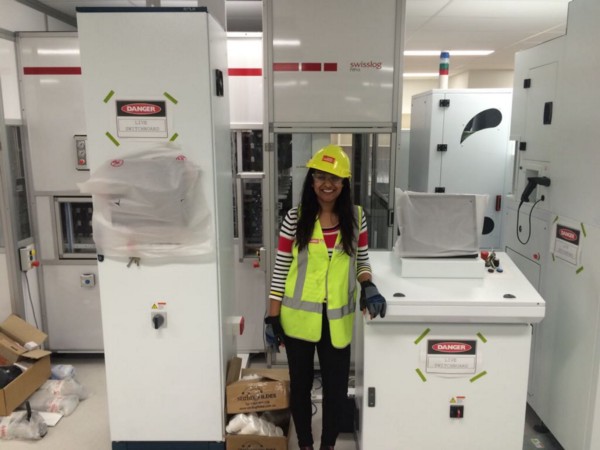F019 Will robots eradicate medication management errors in hospitals? (Lea Dias)
Robotics have various applications in drug management: some hospitals already have fully automated pharmacies connected to electronic healthcare systems. Instead of doctors writing prescriptions on paper and pharmacists in the pharmacy manually preparing the required medicine, everything is executed automatically after the electronic order — from preparation to dispensing.
Even delivery from the pharmacy to the wards can be done with the help of autonomous vehicles. The questions are: what does all this mean for pharmacists, doctors, and nurses in hospitals? How much is their role changing? How much are robotic systems improving medication processes and patient safety?
In short: A lot.
These were the topic of the 19th episode of Faces of digital health podcast, alongside shedding a light on the Australian healthcare system.
Listen and subscribe to the podcast on Podbean, iTunes, Stitcher or Google Play.
My health record
Australia was in the global news this year because of the national EHR project called My Health Record. The idea behind the project was to digitise medical records of all the people from Australia by December. While the plan is ambitious, the critiques are strong.
Firstly because the records are created without patients specific consent - they need to opt-out of the system.
The second problem is that the records are not shared only among healthcare providers but also other government institutions. This is a serious privacy concern as medical information in the wrong hands can affect individuals employment or insurance options.
According to the latest information provided by the Australian Digital Health Agency, which is in charge of the project, “by 17 September 2018 approximately 3 percent (approximately 900,000) of the all eligible people had elected to opt out of having a My Health Record created for them by the end of 2018.”
This is in line with the Agency’s forecasted expectations that around 90 percent of Australians will have a My Health Record by the end of the year. The Agency also told the Senate Inquiry that more than 181,000 Australians have chosen to opt in since 16 July 2018, in order to get the benefits of having a My Health Record right away.
The current statistics therefor are: More than 6 million Australians already have a My Health Record and more than 13,956 healthcare professional organisations are connected, including general practices, hospitals, pharmacies, diagnostic imaging and pathology practices.“It has been running for six years and is already making healthcare management for individuals and healthcare providers easier and safer,” assures the Digital Health Agency.
The opt-out period end on November 15th 2018. You can follow the official statistics here.
One of the people that opted out of the system is Lea Dias. Awarded a Churchill Fellowship in 2013 for her work in technology and automation in medication management to improve patient safety, Dias was the Clinical Lead Pharmacist for the $1.2 billion project servicing a 285 bed pediatric tertiary and quarternary facility —the Perth Children’s Hospital (see the video of the robotic system below).
What do robots do in a hospital
Robotics can bring massive time and money savings alongside reducing medical errors in medical institutions, says Lea Dias. During her research for the Perth Children’s Hospital, she conducted an international study of the different implementation of pharmacy robotics. She visited sites in Bulgaria, France, Spain, Thailand, Canada, and the US, New York.
Lea Dias with the new pharmacy robot in the Perth Children’s Hospital.
Hospital took various approaches in robotics implementation: some implemented it even without having a connected EHR system, others had full scale digitized processes in place.
The benefits differed among institutions: The Lozenetz University Hospital in Bulgaria reported time savings with prescription preparation in the pharmacy (from 20–25 minutes to 5–10 minutes), Lyon Hospital Pharmacy reported savings due to reduction in stock holding and significant impact on saving of nursing time (equivalent to 8+ full time employed nurses).
In this podcast episode
Lea Dias currently works as an advisory business and ICT capacity for international hospitals looking to implement robotic hardware and EHR software solutions to improve patient care. She works internationally and is based in Paris.
We dug into details regarding these findings, as well as the basic characteristics of the Australian healthcare system.
Listen to the full conversation:
Listen and subscribe to the podcast on Podbean, iTunes, Stitcher or Google Play.
Questions addressed:
What is the current state of the My health record project bringing electronic health records to all Australians?
What are the strongpoints of the universal healthcare system in Australia?
How open is Australia to innovation and innovation adoption?
What falls under the term “pharmacy robotics”?
What is a closed-loop medication management system?
Does it make more sense to first implement an EHR system or pharmacy robotics in a hospital?
How are different hospitals approaching robotics implementation?


